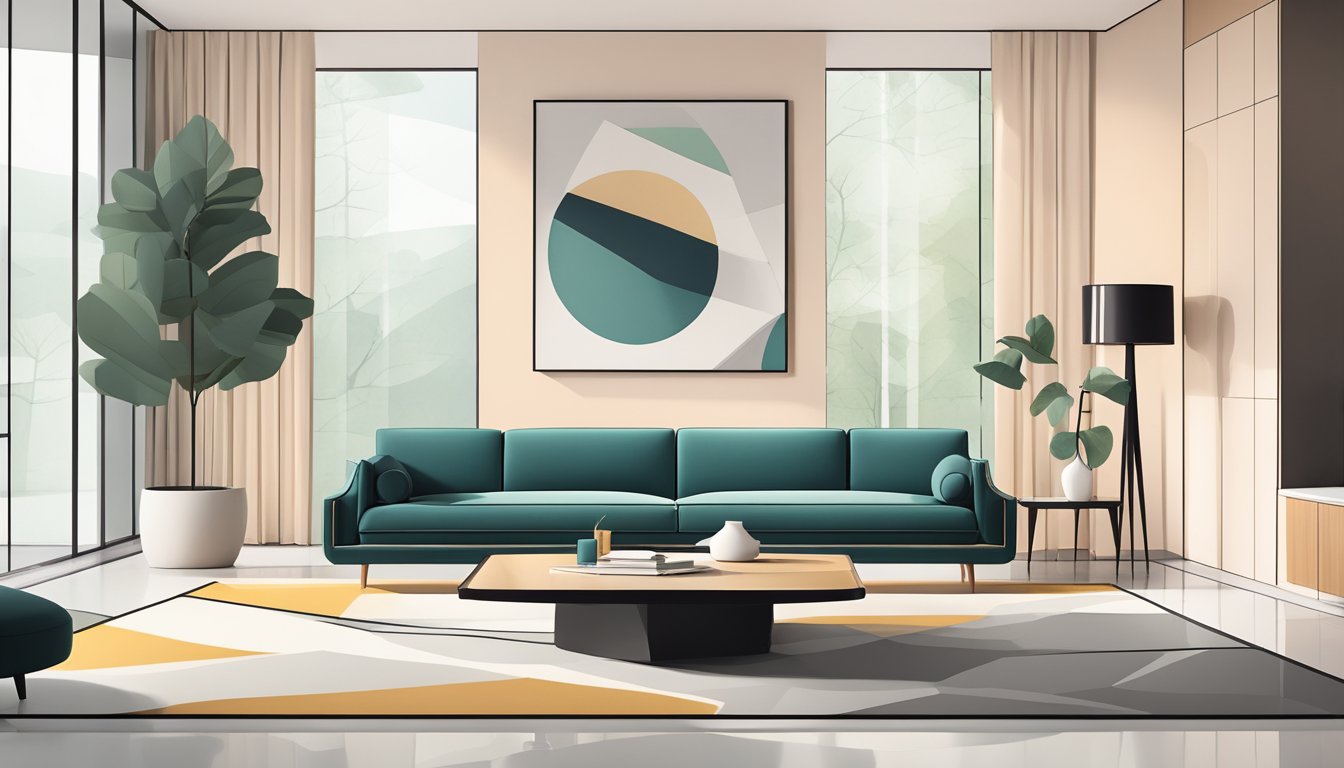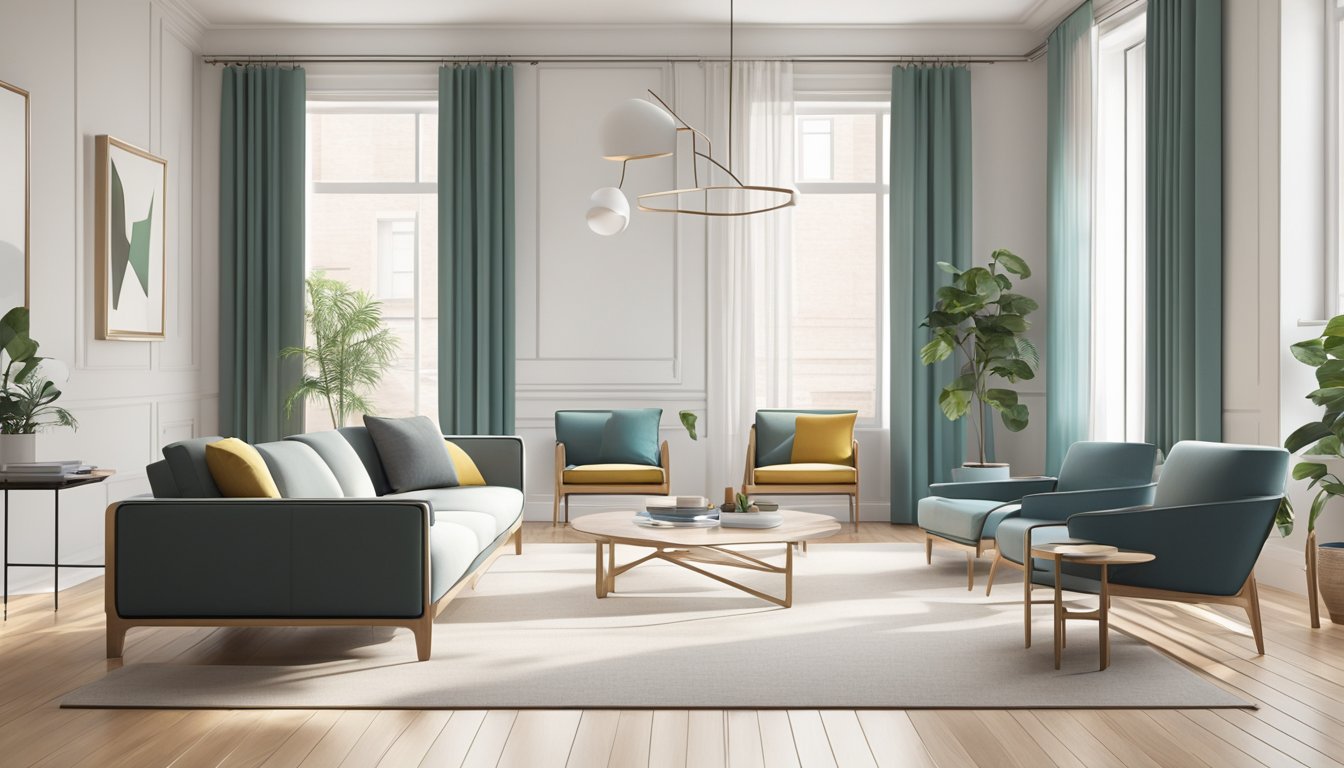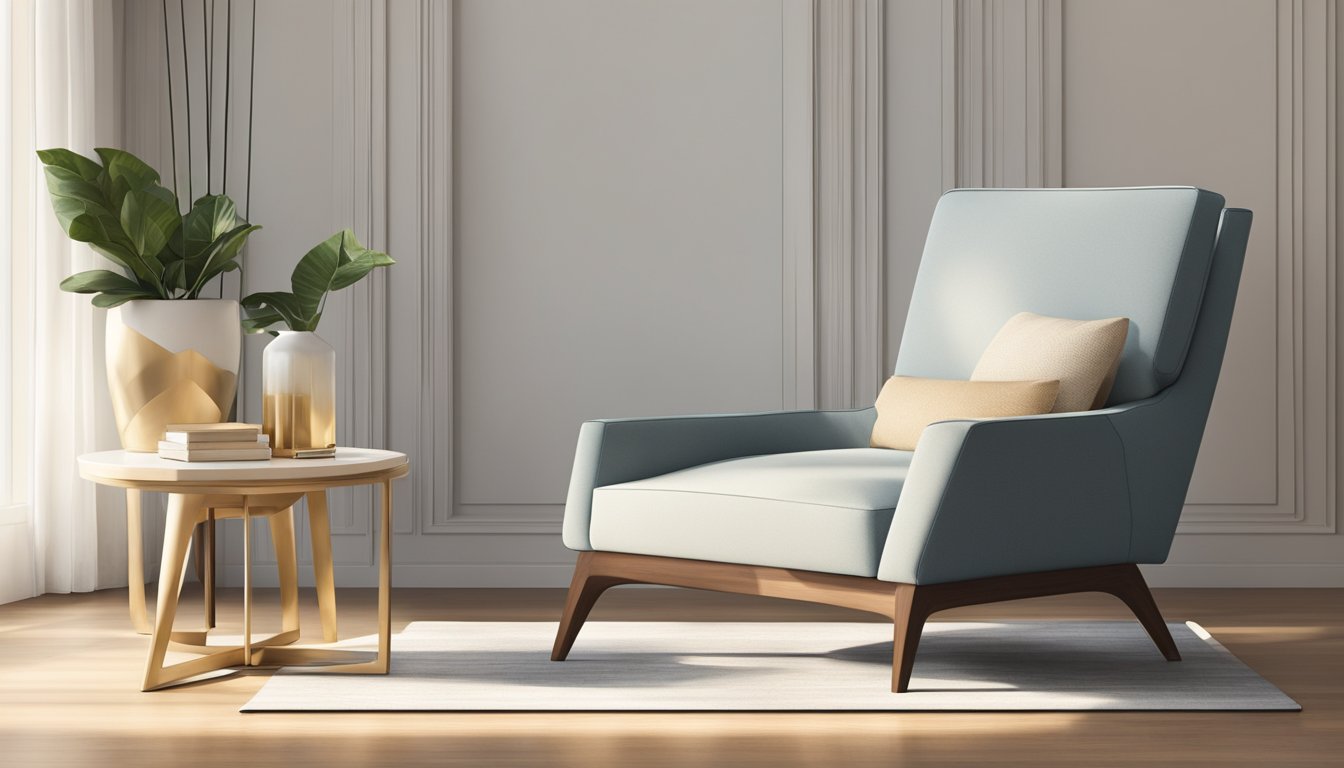If you're looking to add some sleek and stylish furniture to your home, modernism furniture might be just what you need. Modernism furniture is a design style that emerged in the late 19th century and continued to evolve throughout the 20th century. It's characterised by its clean lines, geometric shapes, and use of new materials such as steel, glass, and plastic.

The foundations of modernism in furniture were built on the idea of cutting excess and focusing on practicality of materials in design. This meant that furniture was designed to be functional, simple, and without any unnecessary ornamentation. Modernist designers also believed that furniture should be accessible to everyone, not just the wealthy, and this led to the creation of affordable and mass-produced pieces.
Today, modernism furniture continues to be popular and influential. Many contemporary designers still draw inspiration from the modernist movement, and you can find modernism-inspired pieces in many furniture stores around the world. Whether you're looking for a sleek and minimalist sofa or a statement piece that will catch the eye, there's sure to be a modernism-inspired piece that will fit your style and budget.
Key Takeaways
- Modernism furniture emerged in the late 19th century and continued to evolve throughout the 20th century.
- The design style is characterised by clean lines, geometric shapes, and the use of new materials such as steel, glass, and plastic.
- Modernism furniture is still popular today, and many contemporary designers draw inspiration from the modernist movement.
Foundations of Modernism in Furniture

If you are a fan of furniture design, then you must have heard of modernism. This design movement emerged in the early 20th century as a response to the changing world marked by industrialisation, technological advancements, and shifting societal values. In this section, we will explore the foundations of modernism in furniture, including its historical evolution, key designers and their impact, philosophy and aesthetics, materials and techniques, iconic pieces and their significance, influence of global movements, and interplay with other art forms.
Historical Evolution
Modernism in furniture design is a product of the 19th and 20th centuries, which were characterised by significant changes in the world of art, architecture, and design. The industrial revolution had a profound impact on the production of furniture, leading to the emergence of new materials and techniques. Art nouveau, a popular design movement in the late 19th century, emphasised the use of organic forms and decorative elements in furniture design. However, modernism rejected ornamentation and focused on form and functionality.
Key Designers and Their Impact
Modernism in furniture design was shaped by a group of influential designers and architects, including Charles and Ray Eames, Mies van der Rohe, Le Corbusier, Marcel Breuer, Eileen Gray, Alvar Aalto, and Frank Lloyd Wright. These designers emphasised clean lines, minimalist designs, and the use of new materials such as glass, steel, plywood, tubular steel, ash, molded plywood, plastics, and fiberglass. Their iconic pieces, such as the Barcelona chair, Wassily chair, and Eames lounge chair, continue to be popular today.
Philosophy and Aesthetics
The philosophy of modernism in furniture design emphasised the importance of form, function, and simplicity. Modernist designers rejected ornamentation and focused on creating furniture that was both beautiful and functional. They believed that furniture should be designed to meet the needs of the user, rather than to serve as a decorative object. The aesthetics of modernism in furniture design are characterised by clean lines, geometric shapes, and a minimalist approach to design.
Materials and Techniques
Modernism in furniture design was characterised by the use of new materials and techniques. Modernist designers used materials such as glass, steel, plywood, tubular steel, ash, molded plywood, plastics, and fiberglass to create furniture that was both beautiful and functional. They also developed new techniques, such as bentwood and molded plywood, to create furniture with unique shapes and forms.
Iconic Pieces and Their Significance
Modernism in furniture design produced many iconic pieces that continue to be popular today. The Barcelona chair, designed by Mies van der Rohe, is a classic example of modernist design. The chair features clean lines, geometric shapes, and a minimalist approach to design. The Wassily chair, designed by Marcel Breuer, is another iconic piece of modernist furniture. The chair features a tubular steel frame and a leather seat and back.
Influence of Global Movements
Modernism in furniture design was influenced by global movements such as De Stijl, abstraction, and Dutch design. These movements emphasised the use of geometric shapes, primary colors, and a minimalist approach to design. Modernist designers also drew inspiration from other art forms, such as abstract art and modern architecture.
Interplay with Other Art Forms
Modernism in furniture design has had a significant impact on other art forms, such as interior design and industrial design. Modernist designers emphasised the importance of form, function, and simplicity, which has influenced the way we design buildings, products, and spaces. The interplay between modernist furniture design and other art forms has led to the creation of new and innovative designs that continue to shape the world of design today.
Overall, modernism in furniture design is a fascinating design movement that has had a significant impact on the world of art, architecture, and design. Its emphasis on form, function, and simplicity has led to the creation of many iconic pieces of furniture that continue to be popular today. If you are looking to buy modernist furniture, then Megafurniture.sg is the place to go. We offer a wide range of modernist furniture designs that are both beautiful and functional.
Modernism Furniture Today and Tomorrow

If you're looking to decorate your living space with modern furniture, you're in luck. Modernist furniture has been popular since the mid-20th century, and it's still going strong today. In this section, we'll explore the contemporary relevance and trends of modernist furniture, as well as its innovation and future directions. We'll also discuss acquiring modernist furniture, the intersection of function and form, and the cultural impact of modern living.
Contemporary Relevance and Trends
Modern furniture is still a popular choice for contemporary living spaces. The clean lines, neutral colours and minimalist designs of modernist furniture make it a timeless choice that complements any decor. The mid-century modern style is particularly popular, with its emphasis on simplicity, functionality and practicality.
Innovation and Future Directions
Modernist furniture has come a long way since its early days. Technological advances and new manufacturing techniques have made it possible to create affordable, quality pieces that are both stylish and functional. Sustainability is also becoming an increasingly important consideration in modern furniture design, with many designers focusing on eco-friendly materials and production methods.
Acquiring Modernist Furniture
If you're looking to buy modernist furniture, there are a number of options available. Many American designers are producing high-quality modern furniture, while Europe is also home to a number of top-notch furniture manufacturers. Online retailers like Megafurniture.sg offer a wide range of modernist furniture at affordable prices, making it easy to find the perfect piece for your home.
The Intersection of Function and Form
One of the defining characteristics of modernist furniture is its emphasis on functionality and practicality. However, this doesn't mean that modernist furniture is lacking in style. In fact, modernist furniture often achieves a striking contrast between form and function, creating pieces that are both beautiful and useful.
Cultural Impact and Modern Living
Modernist furniture has had a significant impact on modern living. Its emphasis on simplicity, functionality and practicality has influenced everything from interior design to lifestyle choices. Modernist furniture has also played a role in shaping our understanding of what constitutes good design, and its influence can be seen in many aspects of contemporary culture.
Finally, modernist furniture is a timeless choice for any living space. Its emphasis on functionality, practicality and simplicity make it a popular choice for contemporary living, while its clean lines and minimalist designs ensure that it will remain relevant for years to come. Whether you're looking to create a mid-century modern look or simply want to add a touch of modernist style to your home, Megafurniture.sg has everything you need to make your vision a reality through our wide selection of high-quality furniture.
Frequently Asked Questions

What defines the unique characteristics of modernist style furniture?
Modernist style furniture is characterised by its clean lines, simplicity, and functionality. The designs are often minimalistic, with a focus on form over ornamentation. The use of materials such as glass, steel, and leather is also common. These materials and design principles work together to create furniture that is both stylish and practical.
How has modernist furniture influenced bedroom design trends?
Modernist furniture has had a significant influence on bedroom design trends. The clean lines and minimalistic design of modernist furniture make it an ideal choice for bedrooms. The use of neutral colours, such as white and beige, is also common in modernist bedroom design. This creates a calm and relaxing atmosphere that is perfect for sleep.
Where can one find reputable outlets for authentic modernist furniture?
When looking for authentic modernist furniture, it is important to do your research and find reputable outlets. One such outlet is Megafurniture.sg, a leading Singapore ecommerce furniture store. We offer a wide range of modernist furniture pieces that are both authentic and of high quality.
Who are the pioneering designers behind iconic modernist furniture pieces?
There are many pioneering designers who have contributed to the development of modernist furniture. Some of the most iconic modernist furniture pieces were designed by Charles and Ray Eames, Ludwig Mies van der Rohe, and Le Corbusier. These designers have left a lasting legacy in the world of furniture design.
Can you provide examples of materials quintessential to modernist furniture construction?
Some of the materials that are quintessential to modernist furniture construction include glass, steel, leather, and plywood. These materials are often used in combination to create furniture that is both stylish and practical.
How does art deco differ from modernist furniture in terms of design philosophy?
Art deco and modernist furniture differ in their design philosophy. Art deco is characterised by its ornate designs and use of luxurious materials, such as gold and marble. Modernist furniture, on the other hand, is characterised by its simplicity and focus on functionality. The designs are often minimalistic, with a focus on form over ornamentation.








